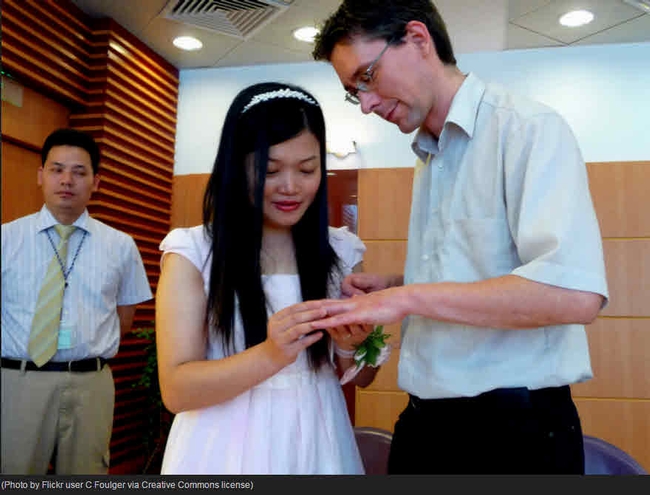
This is especially true of children of mixed marriages.
“Most of this ethnic attrition, or most of this kind of missing identification, is from inter-marriage,” said economist Stephen Trejo of the University of Texas at Austin. “So, if both of my parents have Hispanic ancestry, then it's almost for sure that I'm labeled as Hispanic. But, if I only have Hispanic ancestry on one side of my family…and not the other, then there's a much lower rate of identification.”
In 2010, about 15 percent of all marriages in the United States were between spouses with a different race or ethnicity from each other. The percentages are even higher for Hispanics and Asians. Twenty-six percent of Hispanics and 28 percent of Asians married out, according to the Pew Research Center.
Marrying someone of a different race or ethnicity is much more common among the native-born population than among immigrants. Hispanics born in the United States are almost three times more to marry a non-Hispanic than foreign-born Hispanics.
Among Asians, 38 percent of the native-born and 24 percent of the foreign-born married a non-Asian.
Consequently, this third generation — the grandchildren of foreign-born Americans — is missing when experts like Trejo and fellow economist Brian Duncan from the University of Colorado, attempt to accurately measure the progress of those later generation groups.

However, for Hispanics, the opposite appears to be true.
“For Hispanics, the people who intermarry tend to be higher educated and higher earning,” Trejo said. “What that means is that the people we are missing, children of mixed marriages, could be doing better but we don't see that in the data because they're missing.”
It's possible that in time, Asians and Hispanics will proudly reclaim their lost heritage as the Irish have done. In the late 1800s and early 1900s, Irish newcomers faced virulent anti-immigrant and anti-Catholic sentiment. However, by 1980, when possessing Irish ancestry had become decidedly mainstream, the U.S. Census found that far more Americans claimed Irish ancestry than could be explained by immigration and birth patterns.
The same occurred with the Native American population.
“A lot more people in 1980 than in 1970 where choosing to report their race as Native American rather than white,” Trejo said. “And part of that was, I think, the awareness of Native Americans. There'd been a lot more publicity about Native Americans. Thing like that can happen and change these subjective identifications.”
It's also possible that this so-called ethnic attrition is a natural result of the American melting pot, when people from many different countries, races and religions come to the United States in search of a better life and intermarry and assimilate, eventually becoming one homogeneous population.
“In some ways, it is an example of the melting pot,” Trejo said. “Inter-marriage and identifying with the mainstream is, in some ways, a really strong indicator of assimilation and so, in that sense, it's a good thing.”
Source: Voice of America Blog, Mixed Marriages Causing US Hispanics, Asians to Integrate Faster, by Dora Mekouar, March 7, 2016.